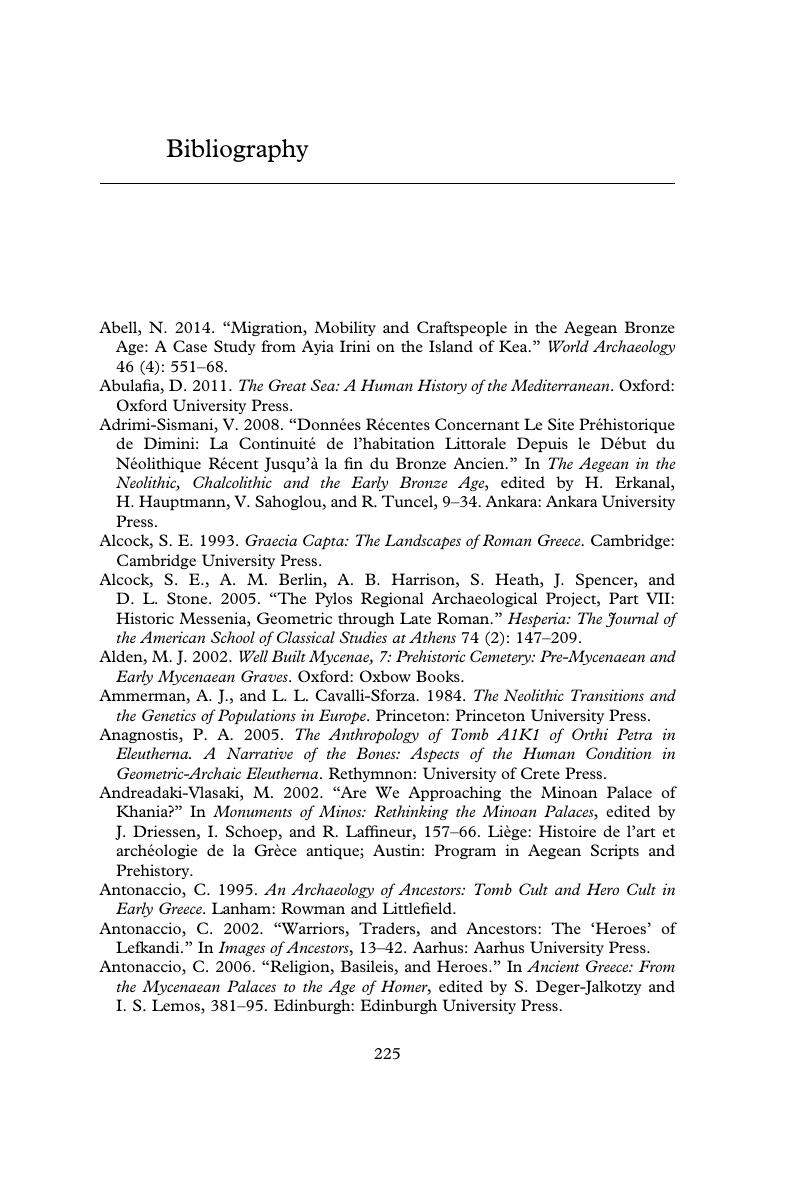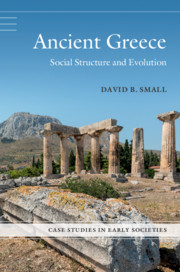Book contents
- Ancient Greece
- Case Studies in Early Societies
- Ancient Greece
- Copyright page
- Contents
- Figures
- Boxes
- Acknowledgments
- 1 My Analytical Frame
- 2 The Ancient Greek Landscape
- 3 The Neolithic in Greece
- 4 Developments ca. 3200–2200 BCE
- 5 The Beginning of Change and the Evolution of a Koine
- 6 Changes in the Latter Part of the Second Millennium BCE
- 7 The Eleventh to Eighth Centuries
- 8 A Brave New World
- 9 Developments after the Rise of Macedon
- 10 The Cretan Difference
- 11 The Sweep of Things
- 12 Greece Is Not Alone
- Glossary
- Bibliography
- Index
- References
Bibliography
Published online by Cambridge University Press: 25 March 2019
- Ancient Greece
- Case Studies in Early Societies
- Ancient Greece
- Copyright page
- Contents
- Figures
- Boxes
- Acknowledgments
- 1 My Analytical Frame
- 2 The Ancient Greek Landscape
- 3 The Neolithic in Greece
- 4 Developments ca. 3200–2200 BCE
- 5 The Beginning of Change and the Evolution of a Koine
- 6 Changes in the Latter Part of the Second Millennium BCE
- 7 The Eleventh to Eighth Centuries
- 8 A Brave New World
- 9 Developments after the Rise of Macedon
- 10 The Cretan Difference
- 11 The Sweep of Things
- 12 Greece Is Not Alone
- Glossary
- Bibliography
- Index
- References
Summary

- Type
- Chapter
- Information
- Ancient GreeceSocial Structure and Evolution, pp. 225 - 266Publisher: Cambridge University PressPrint publication year: 2019



